Eurail Passes are famous as a way to save money while exploring Europe, but they are also confusing and often misunderstood. They are still an amazing money-saving tool for certain types of travelers, and not a wise idea for most others. Before Europe introduced dynamic rail pricing (like airfares, where the price varies depending on when you buy it), a Eurail Pass was an easy way to save money since all tickets had fixed prices that were generally fairly expensive. These days most travelers can save far more money just by buying their train tickets at least a few weeks in advance.
That said, Eurail Passes are still great for longer trips and especially for people who like to make plans as they go. Dynamic rail pricing made advanced tickets much cheaper, but it also made last-minute tickets MUCH more expensive. Below we will discuss Eurail Passes and whether they are a good idea for your trip or not.
Disclosure: This is a reader-supported website and some of the links are affiliate links where a small commission is paid to help keep this site going.
Note: This article was written in 2012 and has been continuously updated since then, so all information is current as of April, 2024.
Eurail 2024 changes: New countries and a mobile version
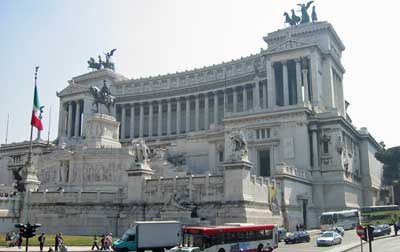
Aside from that it’s just the normal fact that they have updated the timetables as of December 2023 and have a few promotions going on, but those usually don’t happen over the busy summer season.
Eurail passes are now available in a mobile version
Until very recently, Eurail Passes were only available in paper form and they were quite confusing at first. You’d get a pass with a series of empty boxes on it and you’d need to enter your trip before you’d use your pass each day and then have the first conductor verify it. If you lost your ticket (and this was not uncommon), it was a whole ordeal to attempt to get a replacement.
Again in 2024 Eurail offers a fully mobile version that is delivered instantly to your mobile device with no delivery fee. And if you somehow lose your phone, you can resume using your Pass on your replacement with no extra headache. This is MUCH more convenient in every way and as long as you can keep track of your phone you’ll always have your train pass handy.
If your trip will be 2 weeks or less, a Eurail Pass probably won't be worth it
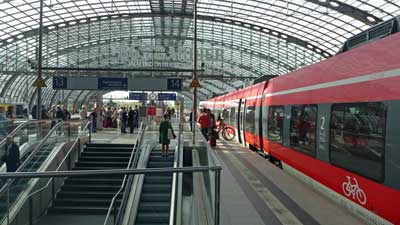
Eurail Passes are ideal for travelers on longer trips, and especially those who don’t want to plan all of their destinations and dates far in advance. If you have your itinerary pretty much planned out and you don’t require much flexibility, you’ll be far better off just locking in your dates and buying your train tickets as early as you can. Again, they can be surprisingly cheap if you buy 2 to 4 months out.
If you are age 27 or younger, a Eurail Pass is probably worth it

With this in mind, if you are lucky enough to still be 27 or younger, you should seriously think about getting a Eurail Global Pass Youth, partly because the sense of freedom instantly gets more expensive at age 28. The age cutoff was 25 until recently, so this change is a great deal for anyone who will be 26 or 27 at the start of their trip.
You aren’t guaranteed to save money by buying a Youth Eurail Pass, but chances are good that you WILL save money and you’ll definitely save a lot of hassle as well. Especially now that Eurail Passes come in a mobile form, it’s even that much more convenient to just hop aboard any train that is about to leave the station and not worry about buying or even having a ticket. Especially for young people, it can be really fun and exhilarating to literally just walk into a train station with your backpack and look at the departure board and then decide where to go at that moment.
If you are age 60 or over, a Eurail Pass could also be great value
Another fairly recent change is that anyone who is 60 years or older at the start of the use of a Eurail Pass now gets 10% off the normal adult fare. That new discount is going to make this a great value for many travelers who might have been on the fence about buying a full-price pass before.
>>>Check prices on Eurail Passes
If you are planning on traveling in 1st Class anyway, a Eurail Pass is probably worth it
Most 2nd Class trains provide similar comfort and legroom to Business Class airline seats, or at least close enough, so for most people it’s not worth the added expense for 1st Class. However, if you are rich or elderly or fear contact with strangers, a 1st Class Eurail Pass is probably worth it no matter what.
Not only do you get much more comfort and legroom in 1st Class, with only 3 seats across instead of 4, but there is another advantage to 1st Class on European trains. Since it’s mostly business travelers and wealthy people traveling in 1st Class, the carriages are almost always mostly empty except in the mornings and late afternoons between large cities. In 2nd Class the only available seats might be two seats in an 8-seat cabin with all the other seats taken up by a loud family or a group of rowdy friends. In 1st Class you are all but guaranteed a peaceful ride, and usually plenty of empty seats from which to choose.
A hidden Eurail Pass benefit: Making extra stops on travel days for free
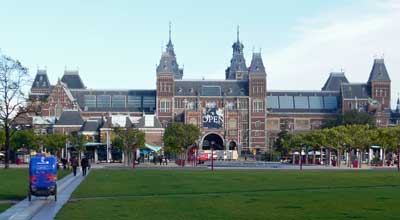
Brussels in particular is one I recommend a short stop in because the small historic center around what they called the Grand Place is amazing and gorgeous, while the rest of the city is rather boring by European standards. With a Eurail Pass you can jump off the train in Brussels and explore the city center for a few hours (luggage storage is cheap and easy) and maybe have lunch, and then hop on a later train to complete your journey to Amsterdam. There are opportunities like this on many if not most trips between larger cities, and if you buy the point-to-point tickets you have to stay on the train you booked.
Another example is the high-speed train between Barcelona and Madrid, which takes about 2.5 to 3 hours in each direction. There are some interesting cities in between, but in this case you could take a morning train from Barcelona to Madrid and then check into your accommodation, and then hop on another train from Madrid to Toledo, which takes about 30 minutes and costs €14 each way. Toledo is a historic and fascinating town, but it’s also pretty small and you can explore the main sights in an afternoon. With a Flexi Eurail Pass where you buy a certain number of travel days, you can save more money by adding on these sorts of nearby stops on travel days.
If you'll be touring major cities within ONE country, a single-country pass might be perfect, and Second Class passes are available for all ages
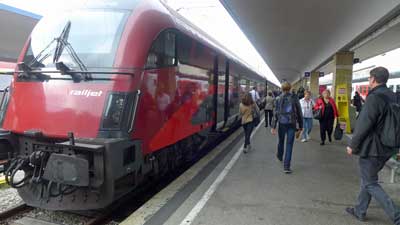
Single-country passes are still available and they MIGHT be good value for you, but it depends on which country and how much traveling you’ll be doing. If you plan on going all over a larger country such as Germany, France, or Spain, and especially if you like to make plans as you go, a Single-country pass for one of those might be your best deal. On the other hand, smaller countries (such as the Netherlands) or countries where train tickets are already fairly cheap (such as Italy) might be harder to get value out of. Long story short, for single-country passes you really need to check fares of the places you plan on going and see how they add up compared to the pass.
>>>Check prices for Single Country Passes
Eurostar (between London and Paris or Brussels or Amsterdam) tickets are now included for Eurail Pass holders for a €30 reservation fee
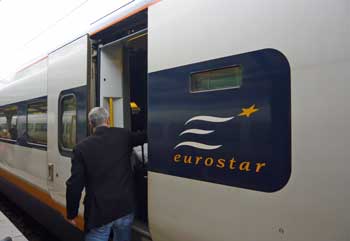
Our recent tests show that Eurostar fares one-way from London to Paris can be as low as €49 if you book about 3 months out, or as expensive as €214 for the same seat if you wait until the day of travel to buy. Round-trip/return tickets can be even cheaper if there is a promotion running.
>>>Check Eurostar prices
If you are on a really low budget, a Eurail Pass isn't a good idea
Here’s the thing. As we’ll discuss below, there are many potential benefits to Eurail Passes, and they will often save you money, but they do cost a lot and they only really save you money when traveling in the more expensive countries.
So let’s say you have a flight to Rome and then US$2,000 to last you a month after you arrive. Buying a Eurail Pass before you go would help you see a lot in that month, but you’d practically need to sleep in parks for your funds to last the whole time. You’d be better off moving slowly in the southern countries, or just in Italy itself, as a way to have the best holiday on your budget. You might also be tempted to use a Eurail Pass mostly on night trains so you can save the cost of a hotel or hostel, but those aren’t ideal for most of us.
The cheapest way to get around Europe by rail is to buy all train tickets online at least a couple months in advance. The fares are low, but they are non-refundable and non-changeable. See how far in advance you should buy train tickets to get those attractive fares.
If more than a little of your travel will be in eastern Europe, a Eurail Pass isn't a good idea
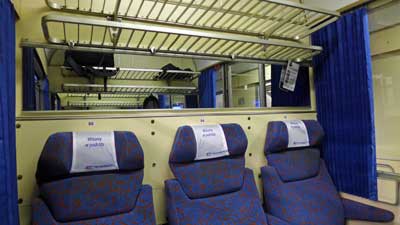
The good news is that the trains operating in this region, and the buses that operate alongside and/or where trains aren’t running, are quite cheap. So if any significant part of your trip will be into this region, a rail pass doesn’t make sense.
Basic types of Eurail Passes
Long gone are the days of the simple options, replaced by specialized passes that are meant to appeal to different styles. It should be pretty easy to figure out which is best for you, and then keep going down the page to decide if it’s worth it at all.
Eurail Global Pass – 4,5, or 7 days within 1 month or 10 days within 2 months
Until recently the minimum number of travel days with 10 days within 2 months, but now you can buy as few as 4 days within 1 month for about €200 to €250 (for first class). This can actually be an interesting strategy if you are planning many shorter and cheaper trips (like within Italy or Eastern Europe), and also 4 or 5 longer trips such as Berlin to Amsterdam. This way you can buy only 4 or 5 travel days and only use them for your most expensive travel days, and just pay as you go or buy cheap advance tickets for your other journeys.
Eurail Global Pass – 15 to 90 consecutive days
This variation allows for unlimited travel on the system for between 15 and 90 total days. They are really only a good idea for people who are certain they are going to travel very often, with much of it being in the north of Europe. The problem with them is that if you really try to get your money’s worth, you will probably ruin your trip by spending too much time on trains in general. On the other hand, if you will be in Europe for 2 or 3 months and plan on traveling around a lot, you can get a LOT of use out of a longer pass. The 3-month pass is around €900 so it’s literally about €10 per day. Imagine going back and forth between Berlin and Munich or Barcelona and Madrid for €10 per day!
One Country Pass
Obviously these are for travel within one country only. Again, they can be great deals if you plan on extensively moving around one particular country.
Where to buy your Eurail Pass
Eurail Passes are cheapest and easiest to buy online, primarily from two main sources which offer all the same products at the exact same prices:
This is a reliable company based in the Netherlands but with fulfillment offices in the US and Ireland. Price of Travel is a partner with this company, and if you use the links of this site we earn a small commission to help keep this site online. Eurail.com is usually cheaper than RailEurope (discussed below) by the way.
They were founded in the 1930s and are based in New York, but owned primarily by the French and Swiss rail companies. They offer free shipping (2 to 3 business days) on all orders of US$399 or more, although now that a mobile version is available, this is meaningless. Price of Travel is a partner with this company, and if you use the links of this site we earn a small commission to help keep this site online.
Reservations on European trains for rail pass holders
For most of the fastest trains between major cities you’ll need to reserve a seat even with a rail pass. It can usually be done just before you leave and the cost is usually around €5. Here’s a full list of which European trains require reservations and which don’t.
Reservations are required on all intercity (longer distance) trains in or involving France, Spain, Switzerland, and Italy. For most trains in Germany, Austria, Netherlands, Belgium, and most of eastern Europe, you can usually find trains that don’t require seat reservations. Often, if you don’t leave until after 9:30am or so, you can ride on any train with no seat reservation, but you have to research each leg to be sure.
How to determine which trains require seat reservations, and also get schedules
You can click on the link just above this section for a list of countries and their seat-reservation policies, but in some cases it’s actually a bit more complicated than that. For example, you can generally ride without a seat reservation on fast ICE (Inter City Express) trains in Germany if you depart after 09:30 in the morning. They do this to free up seats for business travelers who pay full fare, and they don’t mind filling up seats with rail pass holders on trains leaving a bit later.
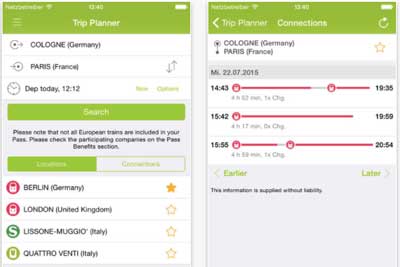
Night trains in Europe are making a comeback
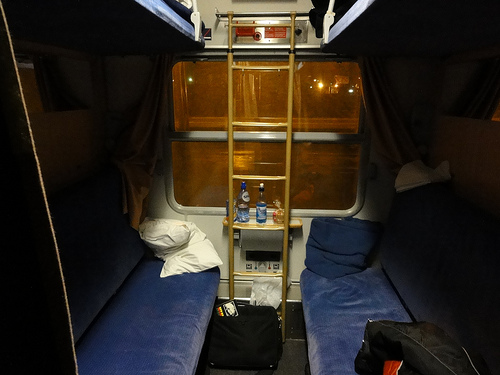
Fast forward to 2024 and night trains are not only expanding service, but they are very trendy. Some of it is nostalgia for the older way of getting around, but most of it is for environmental purposes combined with European hatred for the “low cost airline” experience with RyanAir and Easy Jet etc.
Personally I’m still not a fan of night trains because I find it difficult to sleep on them since they often get decoupled at interim stations in the middle of the night and then coupled onto other trains coming from other places, and I can’t sleep through any of that. But still, they are worth looking into and they are fun to try at least once.
A bit of warning that they tend not to be cheap and even if you have a Eurail Pass you’ll almost certainly want to book a sleeping cabin with a bunk or couchette, and that will come at an extra fee. On the other hand, if you are the sort of person who can sleep sitting upright in a normal seat, then that won’t cost any extra on most overnight trains.
Factors to consider when thinking about any Eurail Pass
Assuming you know which Eurail Saver Pass option is the best one for your type of trip by now, we’ll go over the main factors that should help you decide whether it’s the best idea for you.
Eurail Passes are best for standard ‘medium length’ journeys
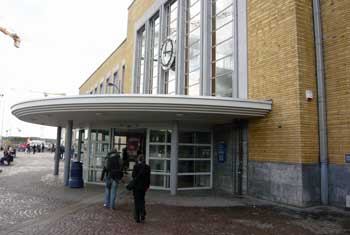
However, if you are determined to travel between Rome and Paris, it’s about a 14-hour journey that will almost certainly be overnight. In this case, a cheap plane ticket is probably better, although taking shorter hops on the train is even better, so spend a day or two in Milan or Lyon on the way instead.
And of course, if you prefer to stop in various small towns between the big ones, then a Eurail Pass won’t pay off, except for the traditional kind for unlimited travel in a given period.
Eurail Passes are better value in northern Europe, France, and Spain, and poor value in Italy
Once you do a bit of research you’ll quickly learn that train tickets (and almost everything else) are much more expensive in Germany, Netherlands, Denmark, Sweden, Norway, and Finland than they are in Greece, Italy, Portugal, and Spain. With this in mind, the regional passes can make sense if you are spending time in the south, but the Global Passes almost certainly won’t. Train tickets in Spain used to be fairly cheap, but in recent years they’ve added new high-speed trains between the major cities, and these are quite expensive.
Unlike most other countries, Italy really subsidizes its train tickets so they are quite reasonable even on travel day, and very cheap if you buy a month or more in advance. For example, you can go between Rome and Florence for around €49 if you buy on travel day, and as little as €19 if you buy well in advance. In most other countries, fares are double or triple that much for similar rides.
So consider your planned itinerary. If more than half of it is in the Mediterranean countries then look into a Regional Pass or just buy tickets as you go, because they tend to be pretty cheap. But if you are planning on spending at least half your time in Paris and places to the north of it, then a Eurail Pass is probably a money saver because those tickets are expensive.
Trains are almost always better than planes
Flying sucks, even in Europe
Until you’ve experienced the joy of traveling around Europe by train you might be tempted to “maximize” your time by flying low-cost airlines between each city. This would be a mistake. In order to get truly cheap airfares you have to purchase long in advance, buying non-refundable tickets. You might also have to commit to flights in the very early morning or in the late evening, because cheap tickets on convenient flights sell out quickly.
And again, most European airports are around an hour outside of the city. They are often on the main train lines, which helps, but still you have to deal with the madness of security and also try to get there at least two hours early. From one city center to any other city center it’s about 5 hours minimum, even if they are close, and those are pretty miserable hours.
Train travel is a positive experience

Not only are all the seats comfortable on trains, but you also have an interesting view most of the time. Better still, trains deposit you in the heart of every city, which is usually the neighborhood with the cheapest hotels and food. It’s a wonderful feeling to step off a relaxing train ride, buy a hot dog or sandwich at a local shop, and then be in your hotel room only about 10 minutes later.
Eurail Passes are better than train tickets alone
As someone who enjoys the process of crunching numbers and looking for value, I have to also mention that I’d buy a Eurail Pass even if it seemed like it would cost a bit more than the individual tickets. With a pass you get an extra element of freedom that is worth a lot more than you might expect until you’ve used one.
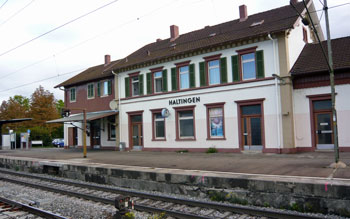
Let’s say you are heading from Amsterdam to Hamburg tomorrow morning. The 09:00 train you planned for might seem a bit ambitious after a long night out, so you can instead opt for the 10:00 or 11:00 train. As long as you walk into Centraal Station 10 or so minutes before departure, you are on. If you are flying you can’t change your ticket, and if you are buying train tickets as you go you have to be in line at the international desk at the train station at least 30 minutes early, and even then you might miss it if they are busy.
Freedom and getting to feel like a big shot
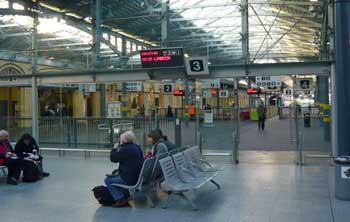
Let’s say you are staying at a hostel in Brussels, and two groups of new friends suggest that you go along with them to their next stops. One group is going to Bruges, which is a short and cheap journey, so you can join them by buying individual tickets (unless you have the unlimited pass, making it free). Then you restart your trip from Bruges, on to your next destination. The other group is headed to Berlin on a night train, which is long and expensive, but with a Eurail Pass you don’t even have to think about the cost. On you go, just like a rich person.
Buying a Eurail Pass is great for those who might run out of money
We all know people who keep meticulous track of every penny they spend, and who are always putting money away for a rainy day. And we all know people who can take a US$100 “entertainment fund” and burn through almost all of it in just a few hours. For the first type of person, a Eurail Pass can help you keep track of expenses, but it’s really the second type of person these are best for.
It’s sad to hear about people who have big plans to see their dream destinations, but they run out of money for transportation halfway into the trip, so they have to just stay put until they fly home. It happens. Locking in your major transportation costs before you leave home, and probably saving money in the process, is a wise move for anyone who isn’t as disciplined as they’d like with their money.
>>>Check prices on Eurail Passes
Bottom line: If you want to keep travel costs down, your choices will usually be a Eurail Pass or buying tickets at least a month or more early
In the last few years, almost every long-distance train ride in Europe has switched to a pricing system similar to low-cost airlines. In other words, tickets go on sale 2 to 6 months ahead of time at very low prices, and they keep getting more expensive as the train fills up and the date approaches. For most trips where a rail pass is possible, this is how things stack up:
Cheapest possible way: Buy advanced (non-refundable, non-changeable) train tickets at least 30 days in advance
Next cheapest way: Buy a Eurail Pass and make seat reservations as you go, usually only a day or less in advance.
Most expensive way: Buy train tickets as you go, or less than a week in advance.
Thinking about it this way should make the choice a bit easier. If you are the type who likes to plan each day and travel segment long before you even leave home, then buy tickets online for the best prices. This can be the best strategy for most shorter trips (10 days or less) because you simply don’t have enough time to change many things as you go anyway.
Buying a Eurail Pass won’t be quite as cheap, but you are buying a LOT of flexibility with the extra money. If you dream of making up your plans as you go, or even making up your plans just a few days in advance, this is almost always your best bet.
But if you wait too long, and just show up looking to buy train tickets as you go, they are going to cost a fortune. As recently as only a few years ago all seats would be the same price on many rail systems, so you could always just wing it. When each country computerized its rail systems so they can sell advanced tickets cheaper, they also had to keep track of seat reservations, so the whole pricing structure had changed to favor advanced ticket buyers and rail pass holders over those who’d prefer to just hop on any train as it is leaving the station.
Have a rail pass or itinerary question of your own?
It wasn’t planned but scores of people began asking me rail pass and itinerary questions at the bottom of this article and a few others. I’m happy to keep answering them and now I’m trying to organize them better as well so they are easier for other people to find.
If you have a question about specific types of European rail passes, please ask it in the comments below.
But if you have a question more about a European itinerary or other non-rail-pass questions, please click over to the European itineraries Q & A article and ask in the comments of that one.

Hey Roger,
I’m looking for some advice. I will be traveling Europe have a tentative plan, but it could use some work and I have little prior knowledge of the places I’m going.
I will be flying from London to I think Spain and then this is my tentative plan:
Madrid
Barcelona
Paris
Brussels
Warsaw
Krakow
Vienna
Florence
Rome
My only limitations for order of destinations is that I will fly into either Portugal or Spain and will fly out of of Rome. I already have the Rome ticket, so that cannot be changed, but where I fly into can be changed for an optimal location. I was planning on spending 2 or 3 days in the smaller cities and 4 or 5 in the larger. I have 38 days to spend on this portion of my trip. Does this look like an okay plan? And if so, would you suggest a rail pass or just single tickets? Aside from the trains and buses I will be on a somewhat tight budget. Are there any smaller, cheaper places to go that you suggest I try to visit? And I’m looking for cities with a tight city center as I will be staying in hostels and don’t want to have to take many buses or taxis, any suggestions for cities like that? And I read an article on picking the right hostels, but I was wondering how you know which hostels are the louder ones and which are the quieter.
Also, would I be better of putting a deposit down on all of my hostels now or should I wait until I’m only a week or so out from the specific one? I don’t want to lose all my deposits if my plan changes, but I also don’t want to not have a good hostel to stay in when I get to a destination since it will be busy when we’re there mid June-mid July.
Thanks for the help and advice!
Kelly,
I think your plan to fly into Madrid and then loop back down to Rome for a flight home is a really good one. Most of the cities on your list are top choices as well, but I’m going to make a few alternate suggestions. Here’s the thing, if you have a specific reason for visiting Warsaw, for example, then by all means go. But there are some cities that people put on their itinerary mostly because they are large and famous, and that isn’t always a good reason to go. So…
Madrid to Barcelona is perfect
Barcelona to Paris can be done with a new high-speed train line, and Paris is incredible
Now after Paris, I’d recommend Bruges instead of Brussels, although you might also spend a few hours in the center of Brussels on the way because it’s something to see. Otherwise, Brussels is built for business people and bureaucrats, and it’s also quite expensive. Bruges, on the other hand, is small, very historic, gorgeous, and interesting.
After Bruges I’d stop in Berlin, which is definitely one of the coolest cities in Europe (if not the world). It’s also fairly cheap for backpackers.
As mentioned, I’d skip Warsaw unless you had a reason to go there, and instead go from Berlin to Prague to Krakow, which are all great highlights and all quite cheap compared to the rest of Europe. From Krakow you could go directly to Vienna, or you could go to Budapest, or both of them. Budapest is another great-value city that is also one of the best for sightseeing.
After Vienna, you might even consider stopping in Venice for one day and one night on your way to Florence and then Rome. Venice isn’t cheap, but it is amazing, and it’s small enough to appreciate in a short stop.
Your plan of spending 4 or 5 days in larger cities is good, although 4 should be enough in Madrid, Barcelona, and Paris. Bruges is small enough for 2 days. In Berlin you could stay 3 or 4 days. Prague is small enough to do in 2 or 3 days, as is Krakow. One day in Venice is enough, and Florence is small enough to do in 2 days if you are in a hurry. Leave 3 or more days for Rome, because it’s huge and packed with top sights.
Depending on what you finally decided upon as a probably itinerary, a rail pass might make sense, although you’d need at least 10 travel days planned to be good value, and I’m not sure you’ll have that many. Your other option would be to buy them online as early as possible for the cheapest fares. These tickets all go on sale about 3 or 4 months early at low fares, and the price goes up as the train is filled. If you bought these train tickets on the day you want to travel, or even the day before, most of them would cost a LOT. Once you are more sure of where you are going, I might be able to help you even more.
As for reserving hostels in time, you should be fine just reserving them a few days before you arrive, even in high season. Most of the better hostels will be booked in advance, but usually not too far in advance (unless there is a special event). If you waited until the day you arrived to book or look for a hostel, you’ll usually be staying in a lousy one with a bad location and poor services.
When looking for a hostel that will suit you, just read the main descriptions and reviews and it will soon be obvious which ones are party hostels and which ones are not. Usually it’s very easy to tell because party hostels will boast about the fun atmosphere, and the non-party hostels will boast about how quiet they are. I also have recommended hostels for most of these cities if you just look on the appropriate page on this site, like this one for Berlin. Once you see those, click on the link and you’ll see if it’s a loud place or a quiet place, and if it’s the wrong kind you’ll find plenty of others that could work.
All of the cities on our lists have dense city centers. You’ll need to ride the Metro in Madrid and Barcelona and Paris and Berlin. The others are small enough that you can walk pretty much everywhere, but it’s all easy. Rome is also huge, although it’s underground system is kind of limited.
Hopefully this helps, and let me know if you have other questions. -Roger
Hi Roger,
Namaste from India! I am planning to travel to Italy with my family in June. The passengers are my mom, dad, brother, grandmother and me. We plan to travel to Rome, Pisa, Florence, Venice, Genoa, Naples and Milan in that order in a 15 day trip. What, in your opinion, would be the best possible Eurail option- buying a first class saver pass or buying a saver and a youth pass for my brother and me in second class? Moreover, is the second class saver pass worth it?
Agam,
Namaste from the US (at the moment)!
First off, the only rail pass that might make sense is the one-country Italy Pass. As you’ve noticed, there are Saver/family options in either 1st Class or 2nd Class. Second Class is comfortable enough for most people, comparable to day-time AC-2 on Indian trains. But 1st Class is obviously much more comfortable, and when traveling in a group it’s not all that much more expensive than 2nd Class. Also, the distances within Italy are pretty short, so none of the tickets would be too expensive anyway.
You could buy a 6 days within 2 months Italy Pass in either 1st or 2nd, depending on your preference.
However, one nice thing about Italy is that it heavily subsidizes its rail system, so the common tickets aren’t too expensive even at the last minute. For example, if you buy a Florence to Venice ticket (in 2nd Class) 3 months early, it’s only €19. And if you wait until travel day, it’s still only €45. Some of your journeys will be longer, but most should be in this price range. In other words, buying a month or two in advance is probably the cheapest way to go. But if you want to make decisions as you go, or at least allow the possibility, then the rail pass is the better option. Best of luck, and feel free to follow up if you have more questions. -Roger
Namaste Roger!
Thanks a lot for the info! I think the pass would be the best option since we may need to alter our itinerary given my gram’s age and health. Also, here is a itinerary that I planned, could you please have a look and give your feedback please:
Rome- 11th night through the 14th.
Naples- 15th morning/afternoon through 16th night
Pisa- 17th day and then leave for Florence in the evening.
Florence- 1 day(i.e 18th)
Venice- 19th and 20th
Genoa- 2 days from the 21st
Milan – 24th noon and then back to India.
Also, I heard that you need to make reservations for all the trains between these cities as given on the EuRail website.
Cheers
Agam
Roger,
Firstly we would like to thank you on behalf of all others travellers for being so helpful to us. I and my wife are planning to come from Montreal to London on 13 Sep 2014. Be in London for 5-6 days. Thereafter plan to go to Paris on 19-21Sep and be back to London. Leave on 22 Sep for Brussels. Leave Brussels on 23 Sep for Utrecht. Leave Utrecht on 24 Sep for Munich. Plan to go to Frankfurt, Hamburg, Heidelburg, Neuremberg. Leave Germany on 28 Sep, Move to Switzerland to stay for a day Geneva, Zurich, Milan for 04 days. Mov to Austria to Vienna for a day on 03 Oct and then to Rome on 04 Oct. Back to London on 07 Oct to leave for home. Do you suggest a Eurorail pass for this.?
Will it prudent to travel from London up and down daily to Paris , Brussels as we have a place of our own to stay or put up in hotels.
May I request you to please guide us.
Sanjay,
As you might already know, the only good way to go from London to Paris and Brussels is on the Eurostar train, which isn’t part of the Eurail system, although you can get a discount if you buy a Eurostar ticket from the same company that sells you a Eurail Pass.
Once you reach Paris, I’m not sure that you’ve chosen the most direct route to tie the remaining cities together, but maybe you have plans that make this the most efficient way? But even if you put them in the most efficient order, you are still going to be taking quite a few longer train rides, and a Eurail Pass is probably a good idea.
I think the 10 travel days in 2 months Global Pass with the Saver option for 2 people traveling together in 1st Class is the way to go. If you have 11 or 12 total journeys planned, it’s probably better to just pay for the cheaper ones individually, and save the Eurail Pass for your 10 most expensive rides. You’ll need to get seat reservations (about €5 each) for most of these trips, but they will be easy to get, and you can still decide your next step almost at the last minute.
The other option would be to buy non-refundable, non-changeable train tickets online at least a month or two in advance. Each country sells tickets quite cheaply for those who are sure of all their plans way in advance. If you prefer to have all of your decisions locked in even before you leave home, you can save money this way. But if you prefer to have flexibility as you go, a rail pass will save money and allow options.
If I understand that last question, you are wondering if it’s worth visiting Paris or Brussels as a day trip from London because you have a free place to stay there? If so, I’d only consider it if you have only one day to see Paris (and I wouldn’t do it at all for Brussels). If you book the Eurostar up to 5 months in advance, you can sometimes get pretty cheap return tickets. But, you have to get to each station more than 30 minutes in advance, so it’s a bit like going early to the airport. Adding that up, it’s at least 5 hours round-trip, and the Eurostar trains have smaller seats than normal trains, so they aren’t too comfortable.
In other words, if someone was going to be in London for 4 days, and they were thinking about spending 1 of those days in Paris, it could be worth it. But staying in Paris itself is a huge part of the charm, so visiting only for a few hours in the day time isn’t the same.
Let me know if you have any other questions on this. -Roger
Hi Roger,
First of all- THANK YOU for all of your help! The more I look into the Eurorail, the more confused I get! Below is my and my boyfriend’s itinerary for 6 weeks from September-October. I understand that London is not included in the Europass, and because we are both over 25 we need to get the 1st class pass, but I think we also need to have quite a few night trains and reservations based on where we are going. I am wondering if the pass is worth it, or if we are better off buying tickets individually in advance. Also, what would you recommend for getting into Oktoberfest from Interlaken as far as reservations go?
Rome- Cinque Terre
Cinque Terre- Venice
Venice-Interlaken
Interlaken- Munich (for Oktoberfest)
Munich-Vienna
Vienna-Prague
Prague-Krakow
Krakow-Berlin
Berlin-Copenhagen
Copenhagen-Amsterdam
Amsterdam-Brussels
Brussels-Paris
Paris-London
Thanks again!
Amanda
Amanda,
Much appreciated. This looks like an excellent trip, including pretty much every one of my very favorite cities in Europe.
You have a few cheaper train trips mixed in here, but most of them would actually be quite expensive if purchased individually. So I think a Eurail Pass would actually work well for you, depending on your planning style.
My best recommendation would be a 10 Travel Days in 2 Months Global Pass with the Saver option. It looks like you’ve got about 12 or 13 trips planned (plus Paris to London on the Eurostar), so you’d buy the cheaper ones individually, probably also in advance. Those two trips reaching Venice will be pretty cheap, so you could buy those in advance and use the pass the rest of the way.
Those rides involving Copenhagen would be very expensive if bought on their own (but Copenhagen is worth it, so do it). As you mention, you’d need seat reservations for most of these trips, but you should have no trouble getting those the day you leave or the day before. First Class reservations are easier to get on shorter notice, so usually the worst case scenario is that you have to wait until the 10am train or 11am train because the 9am train was sold out. Personally, I like to make my seat reservations the day before I leave, so I know exactly where the platform is and how to get back to the station from my hotel, so I can check out of my room the least amount of time before my train leaves and still make it for sure.
Make sure to get the Brussels to Paris reservation in advance, because there might be a quota on that one.
However, the absolute cheapest way to do this trip would be to buy all of your train tickets online, at least a month or more in advance. The cheap tickets go on sale usually 3 or 4 months out, and the price goes up as the seats are sold. The bad part is that all of those cheap advanced tickets are non-refundable and non-changeable, so you literally will be locking in all of your movements before you even leave home. Some people struggle to breath until every last detail is taken care of, and for those people it’s cheap to lock in all of your trains way in advance. But most people on longer Europe trips like this prefer to at least give themselves the ability to wing it and change things as they go. For those people, a rail pass is way cheaper than buying expensive tickets as you go.
I’m not a huge fan of them, but I have written about night trains in Europe, and a few of your journeys might actually fit well with them. Feel free to ask any other questions if you have them. -Roger
Hi Roger,
thank you for being so kind and helpful by sacrificing your own time to help lost souls like us. I really appreciate it. I will be travelling for the first time to Europe from South East Asia and things can get rather overwhelming due to very different infrastructure from where I come from (Singapore).
I will be reaching Rome on 22 Nov Sat at 1240pm (Rome time) and will be leaving from Vienna on 07 Dec Sun at 1045am. Tactically I have 15 days since 07 Dec Sun itself is just spent waking up, grab a bite and set off to fly back to a cruel reality. 😛
1) For these 15 days, I am thinking of spending 7 days in Italy (3-4 Rome, 2-3 Florence, 1 Venice. In between, I am hoping to slot in Pisa, Cineque Terre and Milan on the way from a place to another. Can I and how do I do that? Kindly advise as coming from a very small country (it takes 1h 20mins to travel from from extreme east to extreme west by train in Singapore :P)
2) After that, I will be travelling to Swiss 5 days starting with 1 day Geneva for a day trip to Mont Blanc, 1 day Lausanne, before moving to spend 3 days at Zurich as will be staying over at a friend’s place as a base. The remaining 3 days will be spend on day trips to a) Black forest, Germany b) Lucerne c) Interlaken.
3) After that, will take an overnight train to Vienna and be there for 2-3 days just to visit a few museums, walk around and shop at the Christmas market.
4) Is my plan feasible or am I being too greedy? Also, from my tentative itinerary, it seemed like I should be getting a 8 days Eura rail select pass for 4 countries, is that so?
Once again, thank you for your time and I hope I am not asking too many questions (which I am… :P)!
Hope to hear from you soon and cheers!
Jason L.,
I’m happy to help, and I am also quite fond of Singapore so I know just how different everything is from one to the other.
Your itinerary looks like the schedule for a reality-show race, specifically The Amazing Race (they even did an Asia version and Aussie versions of it). In other words, it looks like you are planning on spending your first 3 days in Rome, and then changing location almost every day for the next 12. Imagine someone from your area planning a 5-day visit to Malaysia, with the first day in Malacca, the next two days in KL, then one day in the Cameron Highlands and their final day in Penang. That person could pull it off and technically they are “seeing” much of Malaysia, but only superficially.
One week, or even 6 days, is a really nice amount of time to see Rome, Florence, and Venice, exactly as you suggest. In that time you’ll be able to see all the most famous sights before moving on, but it’s still enough. If you tried to include Pisa, Milan, and Cinque Terre, you’d need at least 9 or 10 days to get any enjoyment out of it, so I’d save those for a future trip. Going from Venice to Zurich you’d change trains in Milan, so you might schedule 2 or 3 hours there for a walk to the cathedral before your next train leaves.
It sounds like your friend in Switzerland will know how much you can see in the time you have allotted. I’m guessing that you’ll enjoy a visit to Lucerne and/or Interlaken at least as much as any of the cities. And honestly, it’s probably better to spend 2 days based in one of them, than 1 day in each. Otherwise you’ll literally be spending half your waking hours on trains and in train stations.
Unless you have something specific in mind, the “Black Forest” is a bit of a dud as an attraction. It’s just a dense forest with many small towns selling overpriced cuckoo clocks and other junk. On a short trip like yours, skip it.
What I’d really recommend is to spend that first week in Italy, just in the Big 3 cities (you can do a quick day trip to Pisa from Florence if you are in the mood). Even in a week it will go really fast. Rome itself is huge and packed with world-class attractions.
After a week in Italy, you’ll have about 5 days in Switzerland before heading to Vienna and your flight home. In those 5 days, you might try to visit 3 of the places on your list, in addition to Zurich or wherever you’d be based. Even that will really be moving, but at least it will allow you to catch your breath and enjoy the places you have decided upon. Your pal in Switzerland probably has the best advice for how to pull this off.
As for getting around, it will depend on how many stops you ultimately plan for. The trains in Italy are pretty cheap, as in, Rome to Florence and Florence to Venice will cost around €50 if you buy them on travel day, or as little as €20 if you buy a month or more in advance. On a quick trip like this, you don’t have much time to be creative and change plans as you go, so buying in advance might be wise.
The train rides to and around Switzerland will be more expensive, but maybe not by too much. The thing is, it’s a small country so most of those journeys are only 2 hours or so. Switzerland puts train tickets on sale only 30 days in advance, and if you buy them online at that point, you might only average about US$40 or even less. The disadvantage is that they are non-refundable and non-changeable, but you will have to keep moving to complete your loop anyway, so it’s probably not a problem.
The train ride from Venice to Zurich and the one to Vienna will be more expensive, but still fairly cheap if you buy them in advance. Sometimes those night trains have promotional fares in the off season, and you’ll be deep in off season when you go. So I don’t really think a rail pass would be good for you. Hopefully this helps, and feel free to follow up if you like. -Roger
How much do you anticipate the train costing for Hamburg>Berlin and Berlin>Prague? What is the price difference if I buy tickets online now or if I buy them at the station a few days before leaving? Anything else you recommend seeing along the way? Also – sorry for all the questions – is their any risk of buying tickets at the station the day I plan to travel along this trip;is it going to cost more/will seats be available if i just show up to the station 30 minutes before departure?
Thanks again,
Hi Roger,
Firstly, I cannot believe you have been responding to people’s enquiries about the Eurail passes for almost TWO YEARS now! That is incredible and I have already looked into some of the products that you have recommended in order to help keep this site going!
I hope I’m not wasting too much of your time by asking questions that are too obvious but I’m sincerely in a pickle as to whether or not the 4-Country pass including 6-8 days of travel is worth the following itinerary:
– Fly into Rome (4 days)
– Sorrento via Napoli (3 days)
– Milan (2 days – though I’d prefer to skip, but it just so happens my relatives and old classmates are all there!)
– Nice (1 day)
– Marseille (3 days, possibly including a day trip to Lyon?)
– Barcelona (4 days)
– Valencia (1 day)
– Malaga – transfer via ferry to Tangier, Morocco (from then on, we won’t be taking any trains)
It’s not a huge itinerary and I didn’t think I was being overly ambitious but I could be wrong and definitely need some guidance! You had mentioned previously that a pass for the Southern countries didn’t represent as much value for money but I’ve done some rough calculations and even with advanced bookings/fees, it would APPEAR that a 4-country pass (even excluding a 3rd country to travel to) might result in savings.
Any guidance you can give is greatly appreciated!!!
Adonna,
Thanks for noticing how long I’ve been doing this. I didn’t realize it was that long, and there are actually a couple hundred of the older comments that I’ve moved to another post. But I do this because I really enjoy helping people plan trips, and after years of doing this, I have most of it figured out.
I should probably revise that section about rail passes being of little use in the south of Europe. It’s really more that in Italy they tend not to be great value because most trips between the popular cities are short and relatively inexpensive, especially if you buy a month or more early. Spain’s high-speed trains and their high fares are pretty new to the scene.
In your case, the trip from Rome to Sorrento should be quite cheap, so you may not want to buy a travel day for it. But Sorrento to Milan won’t be as cheap, and most of the rest of your trips are also expensive when bought individually. The truth is, the high-speed trains in Spain are quite expensive, as are all longer-distance trains in and through France.
By the way, I feel obligated to type this even though you might have already read it, but Marseille and Lyon aren’t really known as tourist cities. Both are large and diverse, but there are few checklist attractions in either of them. If you have something specific in mind for one or both, then go for it. But if not, you might spend more time in Nice including side trips to Cannes, Antibes, and Monaco.
Also, while I’m at it, Malaga is kind of a dull, industrial port town, but nearby you can get a ferry from Tarifa, which is really charming with a historic old town and it’s also the windsurfing capital of Europe, so it has an interesting surfer vibe.
Thanks if you use the Amazon links I mentioned above, but I should also say that I can get a small commission if someone buys a rail pass through the links on this site. The Select Pass through Rail Europe is the same price as the other sellers, and they have great customer service as well. Let me know if you have other questions. -Roger
Hi Roger,
My goodness – I do wish I had stumbled onto your article sooner!!! To be honest, Marseille and Lyon were (what I thought) practical stops on the way from Nice to Barcelona. Bearing in mind your advice, I am tempted to extend our time in Nice and then catch a flight to Spain from there! Unless there are other cities along the southern Coast of France that you think are worth stopping at?
Also, I am glad you mentioned Malaga – I have a friend living there and so thought I would stop by before heading to Morocco but we might skip that altogether and just head back to Barcelona from Valencia to catch a flight. Is Cordoba worth a visit??
Anyway, bearing all these things in mind – including substituting a couple of train rides for flights – I am now leaning towards a pass as being unnecessary since the prices will come up to roughly the same amount.
I will definitely have to think about it but I’m so glad you are so available to answer all these questions! I had tried to limit this first trip to Southern Europe but I’ll be sure to engage you earlier on for a Northern Europe trip!
THANK YOU!!
Adonna,
There might be a good stop or two along the southern coast of France between Marseille and Barcelona, but I haven’t stopped in that stretch and most of what you’d find would be smaller towns that are dominated by French tourists (which might be interesting?).
Wait a minute, I had confused Malaga with Algeciras, which is the busiest port for Morocco ferries. Malaga is the heart of the Costa del Sol, and I’ve heard some good things about it, unlike the rest of that area and its reputation for new concrete hotel blocks stuffed with Brits. Tarifa really is a cool place though, and a ferry to Morocco is really fun as well.
I haven’t been to Cordoba, but I have been to Seville and Granada, and both are solid choices for visitors.
Even if the cost is about the same, the advantage of the rail pass is that you can change your plans as you go, which is really fun on a longer trip like this. Buying all your tickets in advance can be cheaper, but many people prefer not to have every move already locked in before they leave home. Either way, I’m sure you’ll have a great trip. And feel free to follow up if you are still unsure of some things. Sorry about the confusion with Malaga as well. -Roger
Hi Roger,
I’m planning to cover Florence (2), Rome (3), Milan(1), Venice (2), Paris (4) within 2 weeks (late June- early July). My inbound and outbound flight are from Florence.
I am thinking of buying 2 country pass. I had a query of Venice-Paris journey should be taken in day or night (what will be reservation Fee and how likely one gets reservation.
Do let me know if plan looks good on paper.
Ashishkr,
Unless there is something else going on, you’d be better off doing Florence > Rome > Venice > Milan > Paris > Florence. The fast (TGV) trains from Italy to Paris depart from Milan and then stop in Turin before heading to Paris (Milan to Paris is a bit over 7 hours during the day, and about 10 hours overnight). Unfortunately, the seat reservations on those are steep: 2nd class: €55 /1st class: €75.
Weirdly enough, you can sometimes buy those train tickets cheaper than the cost of seat reservations, if you book early enough (2 to 3 months) from http://www.sncf.com/en/passengers (the official France rail site).
With that in mind, if I were you I’d sort the trains to and from Paris first, and then think about a rail pass if you don’t get a better fare just buying those alone. The other key fact to be aware of on your trip is that the train tickets within Italy are fairly cheap even without a pass. For example, Florence to Venice is €19 if you buy well in advance, and only €49 if you buy on travel day. Those other trips within Italy will be similar prices, or a bit more, so you might find that a rail pass isn’t a good value.
Generally, for trips between the main tourist cities in Italy, a rail pass doesn’t save any money. Best of luck, and feel free to ask other questions if you have them. -Roger
Hey Roger,
My friends and I are planning on spending two month in Europe this summer. The plan is to fly into Munich, then venture to Prague, Vienna, Split, Greece. From here we want to fly to Lisbon and travel through Madrid, Barcelona, (potentially Lyon), Paris, Brussels and Amsterdam. It seems that the 15-day within 2 months pass makes sense but apparently travelling from Split, Croatia to Athens (where we will take ferries to either Ios or Mikonos) is long, costly and much more difficult than it looks. I am wondering if you have any suggestions or comments. Are we covering too much ground as well? Is travelling by train the best bet throughout those countries despite how slow the trains are told to be in the Eastern countries. Is renting a car an affordable, not to stressful option?
Many thanks,
Jaan
Jaan,
Hmmm….this is a tricky one, for the exact reason that you’ve discovered. The trains in Croatia go as far south as Split, and there is good bus service to Dubrovnik, but once you get south of there it’s like going 20 or 30 years back in time. It’s sort of a black hole of transportation, except for ferries over to Italy and then back down to Greece. You could take long-distance buses from Split to Sarajevo to Nis to Sofia to Athens, but those are fairly slow so it would take 2 days, and the scenery isn’t all that interesting either.
The two possibilities that come to mind are, to spend more time in the Croatia area, including a visit to Dubrovnik and at least one of the islands as an alternative to Greece, or to skip Split on this trip, and fly to Athens from Vienna or Budapest or Venice instead. I’d probably save Croatia for a future trip, which leaves more more time in Athens and the Greek Islands, and the flight to Lisbon from there should be easy as well.
On a trip of two months, I think scheduling 15 to 20 stops is just fine, so I don’t really think you are trying to do too much. Your ideas for after you arrive in Lisbon seem well thought out and filled with highlights. I don’t know if I’d go to Lyon unless there is something specific there you want to see. I usually recommend Nice as the second-best stop in France, as it’s very well set up as a hub for visitors, and it’s a short train ride to both Cannes and Monaco for quick day trips.
Renting a car in Europe is a good idea for visiting the wine regions of France or the hill towns of Italy, and that sort of thing. But for going from one city to another, it would be a nightmare. There are toll roads in many areas, plus very expensive fuel of course. The worst part is that parking in historic cities is very expensive or very challenging, if not both.
The 15-day Global Eurail Pass that you mentioned does seem ideal for a trip like this. Pretty much every train journey you have in mind would be quite expensive if bought on its own, unless you are prepared to buy them all at least a month in advance. On a 2-month trip like this, having flexibility should be a huge source of joy, and with a Eurail Pass the only thing you have to worry about is the seat reservations (usually €5 each), which you can get the day of travel or the day before.
In other words, the absolute cheapest way to get around would be to buy non-refundable and non-changeable train tickets at least 1 to 3 months in advance (online, from the official rail sites of each country). With those advanced fares, you can often pay maybe €40 or €50 for a train ticket that would cost €120 if you bought it on travel day. So compared to an average of maybe US$70 per ride with a rail pass, buying way in advance is a bit cheaper. But with a Eurail Pass, you don’t care how much the tickets cost as long as there are still a few seats available, which there almost always is. You are locked in at a lower price, and the seat reservations are usually easy to get with little notice. Just FYI, on some of the popular long-distance routes in France there are quotas for rail-pass seats, and higher seat reservation fees. But as long as you plan your France portion at least a few days in advance, you should be fine.
Hopefully this helps, and feel free to follow up if you have other questions. -Roger
My wife and I are going to be traveling through Europe for 14-16 days with a global rail pass and am considering locations and possible home bases. I prefer 5 star locations that are devoted to tourism. Beauty, connivence & culture are our focus. (We only speak english.)
Could you recommend some routes home bases?
BELGIUM or NETHERLANDS: Base or route
(This spot I could Skip the this all together and head to Germany)
GERMANY
Best 3 day Route
-I’ve heard there is great trip though the along the river
then heading toward route to AUSTRIA, and or LIECHTENSTEIN.
(Route or Base)
SWITZERLAND: Berne Lucerne or your recommendation for a HOME BASE or Route
I’m thinking that there are several nice day rides
The a route through FRANCE. . . back to Paris
Advice & Recommendations? 🙂 -A sleep train would be appreciated if convenient
Rodney,
In the Benelux area, Amsterdam is by far the most interesting city, and I actually put it in my Top 5 for all of Europe (along with London, Paris, Rome, and Venice). I’d recommend staying in Amsterdam for 3 or 4 nights, and on one of your days in town you can do a bus tour of the area, which will take you to Delft, the flower market, Rotterdam, and a few other interesting spots in one convenient loop. The alternative would be a combination of Brussels and Bruges, but neither really compares to Amsterdam for beauty, convenience, and culture (at least on a short visit).
In Germany there are a few options involving Rhine River trips, which leave from Cologne and Frankfurt, among other places. There are little castles and other historical features all along the river, and you can see quite a bit in only a few hours out there. But Germany is a very large country to try to see in just 3 days, so at best you’ll be seeing a small slice of it. If you are in the mood to really move quickly, you could go from Amsterdam to Cologne (for 1 night) and then down to Rothenburg ob der Tauber for 1 night, and then to Munich for 1 or 2 nights. A good chunk of those train rides would be along the Rhine, and Rothenburg is part of the “Romantic Road” that is also quite lovely.
I’d recommend at least 2 nights in Munich, and from there you are a short train journey to Salzburg, which is Austria’s jewel of the Alps. It’s a wonderful town in a gorgeous setting, with endless tourism opportunities involving Mozart and/or the Sound of Music. I think 2 nights in Salzburg should be enough, assuming you are on a tight schedule, and from there you can take some amazing train rides into Switzerland.
The best two options in Switzerland are Lucerne or Interlaken as a base for 2 or 3 nights. In each one you’ll have many opportunities to explore the Alps and the little scenic villages, which are mainly accessible by ski gondolas and lifts. Interlaken is near the base of the Jungfrau, so it’s an ideal choice if you’ve thought about going up there and doing that historic tourist railroad (it’s private, so it’s not included with Eurail Passes, though they do offer discounts).
From there, you’ll just want to take the train straight into Paris. If you want to keep this trip to 16 days or less, you are already scheduling a lot, so if you tried to spend another 2 days in France, it would be too much. Of course if you wanted to eliminate one of the other areas of your trip you would have enough time for more France, but what you have in mind already fits together in a really nice package so I think you should stick with it.
Each of the places mentioned above are really solid tourist destinations with all the services you could want, including wide choices of 5-star hotels. You’ll also have no issues as English-only speakers at any of these places (which isn’t as true in much of France).
There are really no night trains that would work with this itinerary, and sleeping on them is a challenge for many of us as well, so it might be for the best.
I think this will help you quite a bit. Feel free to ask any other questions you might have as your trip approaches.
ATTENTION EVERYONE
By the way, for anyone reading this, many people have asked how they can help this site, and I just put together a list of my recommended travel gear including backpacks, shoes, gadgets, accessories, and guide books. Everything on the list is inexpensive and high quality, and if you order any of it through the Amazon links on the page, I get a small cut to keep this site going. If you are going to buy anything on Amazon, travel-related or not, going through the link near the top would be much appreciated. -Roger